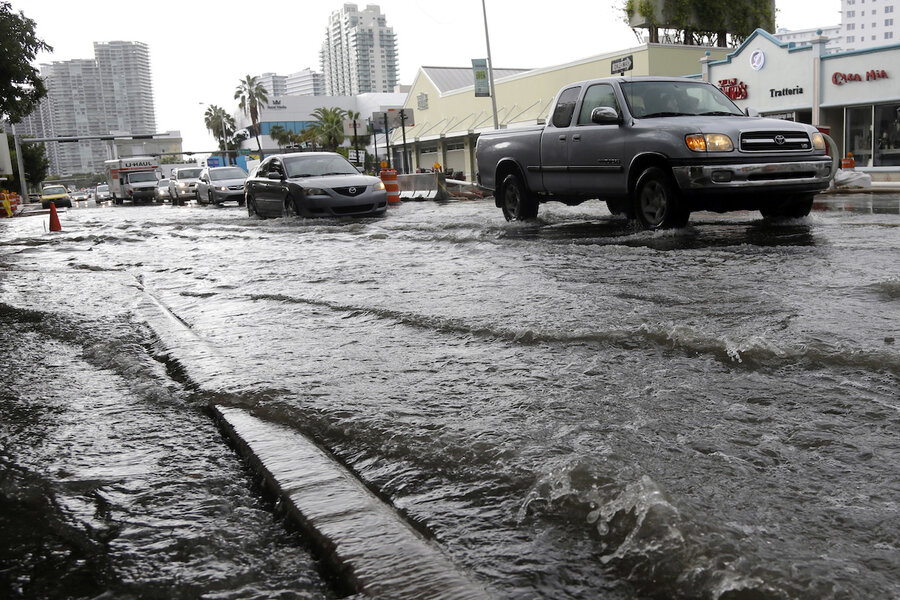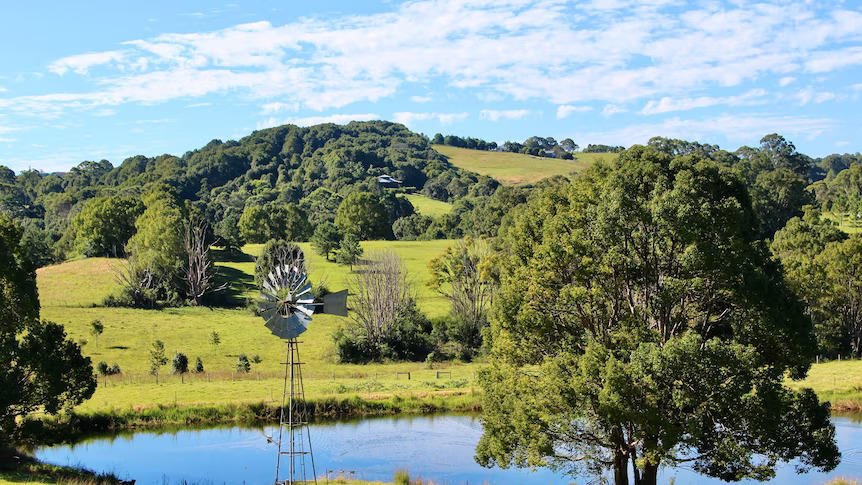Original publication by Laurie Goering for csmonitor.com on 9 December 2022

awareness about extreme weather, video game designers are increasingly incorporating elements of climate change
Lynne Sladky/AP
Climate experts have long struggled to help people see and emotionally grasp likely futures as the planet warms. Virtual reality games offer decision-makers a choice of alternative futures, and can be seen as an immersive way to experience climate risk.
It’s 2040 in Miami, and a powerful hurricane has swamped the low-lying city. You stand alone under a dark, foreboding sky, chest-high waves sloshing around you. An abandoned car floats nearby, one of the few objects visible in the expanse of water.
A ball-shaped robot then hovers into view, urging you to grab a computer hard drive from the car. Once you insert the drive into the robot, you’re whisked out of the harrowing scenario and back to safety.
The scene is from an immersive virtual reality game developed for the Adrienne Arsht-Rockefeller Foundation Resilience Center as part of growing efforts to give policymakers a visceral sense of what their decisions on climate change today could mean in the future, for good or bad.
“People don’t realize what their city will be like in 2040 if they don’t implement climate solutions,” said Nidhi Upadhyaya, a deputy director of the U.S.-based center. But using virtual reality, “we can get them to see what’s going to happen.”
Climate experts have long struggled to help people see and emotionally grasp likely futures as the planet heats, both the dystopian and the potentially positive – the cheap, clean energy, thriving economies, and healthy nature and people that could be possible with a swift shift away from fossil fuels.
But virtual reality – particularly games that put controllers in users’ hands, letting them make decisions and see the consequences – are changing that.
“Virtual reality is a very powerful medium – especially if it’s the first time you’ve had experience with it,” said Chance Glasco, the producer of the Arsht-Rock game and one of those showing it off at the COP27 United Nations climate talks in Egypt last month.
“It’s amazing what it can do – it feels like being portaled to another destination,” said the animator, who has previously helped develop a range of best-selling commercial video games.
At COP27, those trying out the experience ranged from a delegation of Indian government officials – who told Ms. Upadhyaya they saw virtual reality games as a great potential tool for training their teams – to a goat-herding Bedouin sheik transfixed at being instantly transported to the United States.
“I’m in America! I’ve always wanted to go to America!” he exclaimed, controllers in hand, as he navigated through scenes including a futuristic Miami complete with solar-paneled street shades, electric cars, and a Mobil electric vehicle recharging station.
Climate change pressures and impacts are already making their way into a growing range of commercial video games, Mr. Glasco said – giving some of the world’s estimated 3 billion video gamers almost tangible first-hand experience with them.
For example, Floodland, a survival game set in a world drowned by climate change, launched last month, and SimCity, a long-standing world-building game, added climate change impacts as long as a decade ago.
Martial Arts Tycoon, a game developed by Mr. Glasco’s private studio, lets players manage a martial arts gym, with training done in part on the roofs of Brazil’s infamous slum favelas.
As temperatures get hotter, the fighters being trained have a greater chance of heat exhaustion, hurting their agility. But investing in shade covers and giving fighters plenty of water limits the damage.
Heatwaves in the game are given names and ratings – the way hurricanes and tropical storms are currently named globally – a change Arsht-Rock hopes to bring about in the real world to improve awareness of fast-worsening extreme heat risks.
Mr. Glasco said the idea isn’t to build climate change video games, but to make climate change a reality in games in a way that builds awareness of the same changes happening in the external world.
“If a million people play this game and are introduced to the heatwave ranking system, once rankings are deployed on the news they’ll say, ‘Hey, I ought to stay inside,’” noted Mr. Glasco, a senior fellow at Arsht-Rock.
The Miami 2040 prototype game was put together on the cheap in under three months, but high-spec games can cost over $100,000, or millions for a commercial product, he said.
Still, Arsht-Rock thinks the technology’s ability to make climate change risks and opportunities powerfully real will drive investments in similar games by government bodies, businesses, nonprofits, and others.
It has launched a gaming center with the aim of creating its own games and helping other organizations expand the genre, as part of a broader push to drive effective climate policy and build resilience to impacts.
“We want every policymaker to try this,” said Ms. Upadhyaya at Arsht-Rock. Many people are now aware climate change risks are growing, “but this is a faster way of educating them,” she added.
Mr. Glasco said he’s beginning to wonder just how much power the new virtual reality games actually have.
The first time he showed the Miami 2040 game, on a trip to Washington D.C., Hurricane Ian slammed into his home in the Florida city of Orlando, forcing him to return to his soggy house by jet-ski through flooded streets.
A month and a half later, on the day he began exhibiting the video game at COP27 in Egypt, another hurricane hit his home.
“It might be it’s a weather manipulation game,” he joked. “If it happens one more time I might have to throw it off my roof – and save Florida.”




